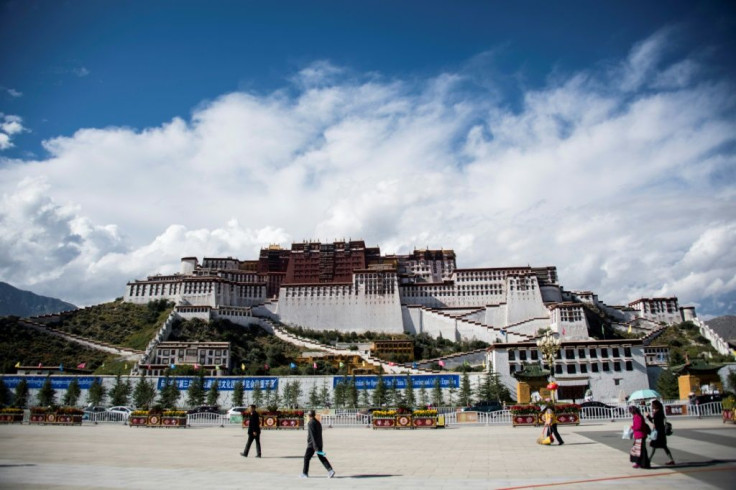China's Labour Programme In Tibet Has Echoes Of Xinjiang - Report
China is forcing Tibetan farmers and herders into labour programmes similar to those used in troubled Xinjiang, a US research institute alleged Tuesday.
The moves risk a "loss of cultural heritage" in the politically sensitive region, the group's report warned.
Authorities in Tibet, a predominantly Buddhist area in China's far west, have touted the scheme -- which puts rural workers to task in factories -- as a tool for poverty alleviation.
They say this is in line with President Xi Jinping's goal of eradicating extreme poverty by the end of 2020.
But researchers at the Jamestown Foundation said "militarised vocational training" is also a form of ideological indoctrination and assimilation towards ethnic Tibetans, who make up 90 percent of the remote border region's population.
It said more than 500,000 rural labourers -- mainly herders and subsistence farmers -- were trained in the first seven months of 2020, with each county assigned quotas.
It didn't cite any comparable figures for previous years.
The training schemes aim to instil "work discipline, Chinese language and work ethics", according to a 2019 Chinese government action plan quoted in the report.

A 2018 report by the Nagqu city government also states that the purpose of the labour transfer scheme is to "effectively eliminate lazy people".
Companies that fulfil the hiring quota for workers are offered up to 500,000 yuan (about $75,000), the report said, while herders and farmers are also encouraged by the scheme to hand over their livestock and land to large state-run cooperatives.
"In the context of Beijing's increasingly assimilatory ethnic minority policy, it is likely that these policies will promote a long-term loss of linguistic, cultural and spiritual heritage," wrote the report's author Adrian Zenz, a researcher at the US-based Victims of Communism Memorial Foundation.
Nearly 50,000 people have been transferred to other areas of Tibet, and more than 3,000 sent to other parts of China, the report said.
The report claims there are similarities with labour schemes in the troubled Xinjiang region.
The scale of the Tibetan work scheme is still dwarfed by that of Xinjiang -- which trained an average of 1.29 million workers each year between 2014 and 2019, according to a government white paper released last week.
Both the EU and the US have raised concerns this year over China's treatment of minorities in the Himalayan region.
Beijing says its troops "peacefully liberated" Tibet in 1951, but many exiled Tibetans accuse the central government of religious repression and eroding their culture.
Foreign journalists have been largely barred from visiting the region since 2008, making it difficult to independently investigate reports from researchers and rights groups.
© Copyright AFP 2024. All rights reserved.











